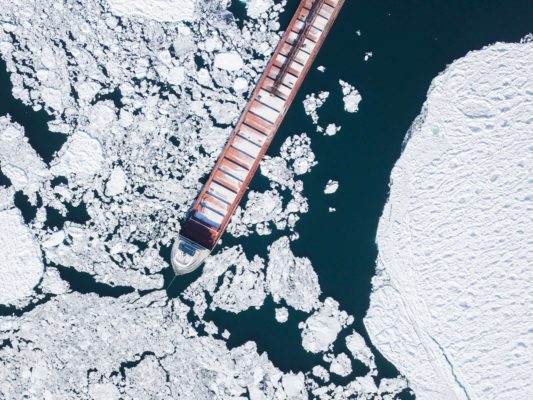Reduced and thinner sea ice makes Arctic waters increasingly appealing for shipping, fishing, tourism, and mineral exploration. However, with increased accessibility and more dynamic ice conditions comes a greater risk for ship crews to encounter sea ice and icebergs outside of their usual seasonal limits. To help them navigate, timely and reliable sea ice information is key. Have you wondered how ...[Read More]
Mapping sea ice from space

Figure 1. The thinning and retreating of sea ice have led to increased human activity in Arctic waters. Hence, marine traffic and activities such as fishing, shipping, oil and mineral exploitation are expected to increase in the future. To handle navigation in ice-covered waters, vessel crews need appropriate planning support. [Credit: Alex Perz/Unsplash]
